What is access management?
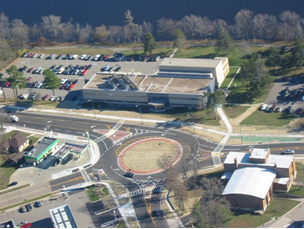 Access management is the systematic control of the location, spacing, design, and operation of driveways, median openings, interchanges, and street connections to a highway. It also involves highway design applications, such as median treatments and auxiliary lanes, and the appropriate spacing of traffic signals.
Access management is the systematic control of the location, spacing, design, and operation of driveways, median openings, interchanges, and street connections to a highway. It also involves highway design applications, such as median treatments and auxiliary lanes, and the appropriate spacing of traffic signals.
The purpose of access management is to provide vehicular access to land development in a manner that preserves the safety and efficiency of the transportation system. The practice of access management extends the concept of access design and location control to all highways — not just controlled-access highways or freeways.
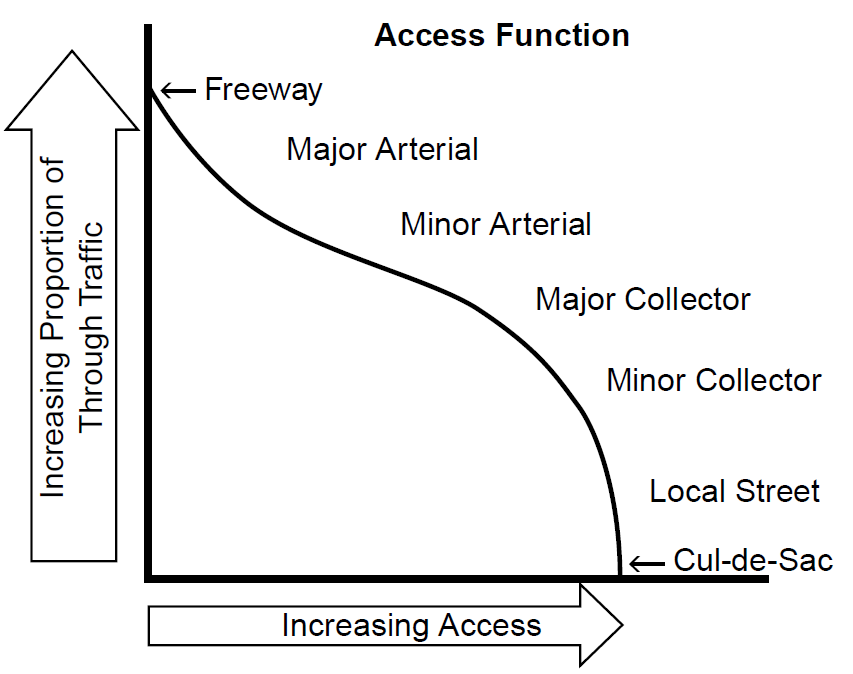 From a planning viewpoint, access management is a systematic way to carry out the highway functional hierarchy implicit in state, regional, and local transportation plans. Highways are classified by function on the basis of the priority given to land access versus through-traffic movement.
From a planning viewpoint, access management is a systematic way to carry out the highway functional hierarchy implicit in state, regional, and local transportation plans. Highways are classified by function on the basis of the priority given to land access versus through-traffic movement.
Access management is particularly important along arterials and other primary roads that are expected to provide safe and efficient movement of traffic, as well as access to property. However, access management is still necessary on lower-level roads, such as minor collectors and residential streets, to address safety considerations, such as sight distance and corner clearance.
Why is access management important?
General access management benefits
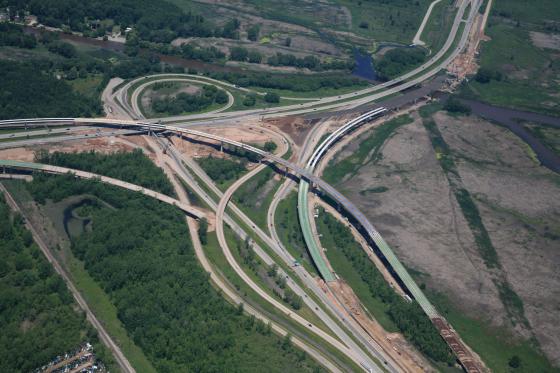 Highways are a vital public resource. They are costly to build, improve or replace. When budgets are limited, effective transportation system management is not an option—it is essential. WisDOT does not want major highways to become functionally obsolete assuming that they will be reconstructed or replaced in the future. Thus, in nearly all cases, WisDOT does not allow closely spaced curb cuts, median openings across a turn lane, driveways in a major intersection, or poorly coordinated traffic signals, which create unsafe and congested conditions on major highways.
Highways are a vital public resource. They are costly to build, improve or replace. When budgets are limited, effective transportation system management is not an option—it is essential. WisDOT does not want major highways to become functionally obsolete assuming that they will be reconstructed or replaced in the future. Thus, in nearly all cases, WisDOT does not allow closely spaced curb cuts, median openings across a turn lane, driveways in a major intersection, or poorly coordinated traffic signals, which create unsafe and congested conditions on major highways.
By managing highway access, WisDOT can extend the life of a highway, increase public safety, reduce traffic congestion, and improve the appearance and quality of the built environment. Not only does access management preserve the transportation functions of a highway, it also helps preserve long-term property values and the economic viability of abutting development. From an environmental perspective, improved traffic flow translates into greater fuel efficiency and reduced vehicular emissions. Consolidating access roads is also less damaging to rural landscapes or environmentally sensitive areas than numerous individual private driveways.
Who benefits from access management?
Motorists
- Face fewer decision points and traffic conflicts, which simplifies driving and increases driver safety
- Experience fewer traffic delays and arrive more quickly at their destinations
Cyclists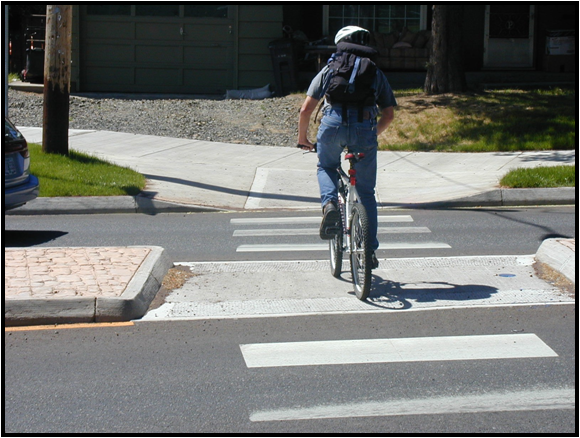
- Face fewer decision points and conflicts with traffic, which simplifies cycling and increases safety for cyclists
- Benefit from more predictable motorist travel patterns
- Can select alternative travel routes as local supporting highway systems are developed
Pedestrians
- Face fewer and less frequent access points where motorists enter and exit the roadway making it safer to walk along major roadways
- Can use medians as a refuge when crossing several lanes of traffic
Transit riders
- Experience reduced delay and reduced travel times
- Benefit from a safer walking environment
- Experience more convenient access to transit stops as connectivity of streets, sidewalks, and pedestrian ways is improved
Business persons
- Are served by a more efficient roadway system that captures a broader market area
- Benefit from stable property values due to a well-managed roadway corridor
- Experience a more predictable and consistent development environment
The freight industry benefits from reduced delay and increased safety, which results in lower transportation costs and shorter delivery times
Government agencies
- Benefit from the lower cost of delivering an efficient and safe transportation system
- Benefit from improved internal and intergovernmental coordination
- Are more effective in accomplishing their transportation objectives
Communities
- Receive a safer transportation system
- Benefit from less need for road widening, which causes displacement of businesses, homes, and communities
- Benefit from more attractive roadway corridors
- Help protect and preserve their investment in transportation facilities and may reduce capital improvement costs for new or reconstructed roadways
What happens when roadway access is not managed?
Without access management, the function and character of major highway corridors can deteriorate rapidly. Failure to manage access is associated with the following adverse social, economic, and environmental impacts: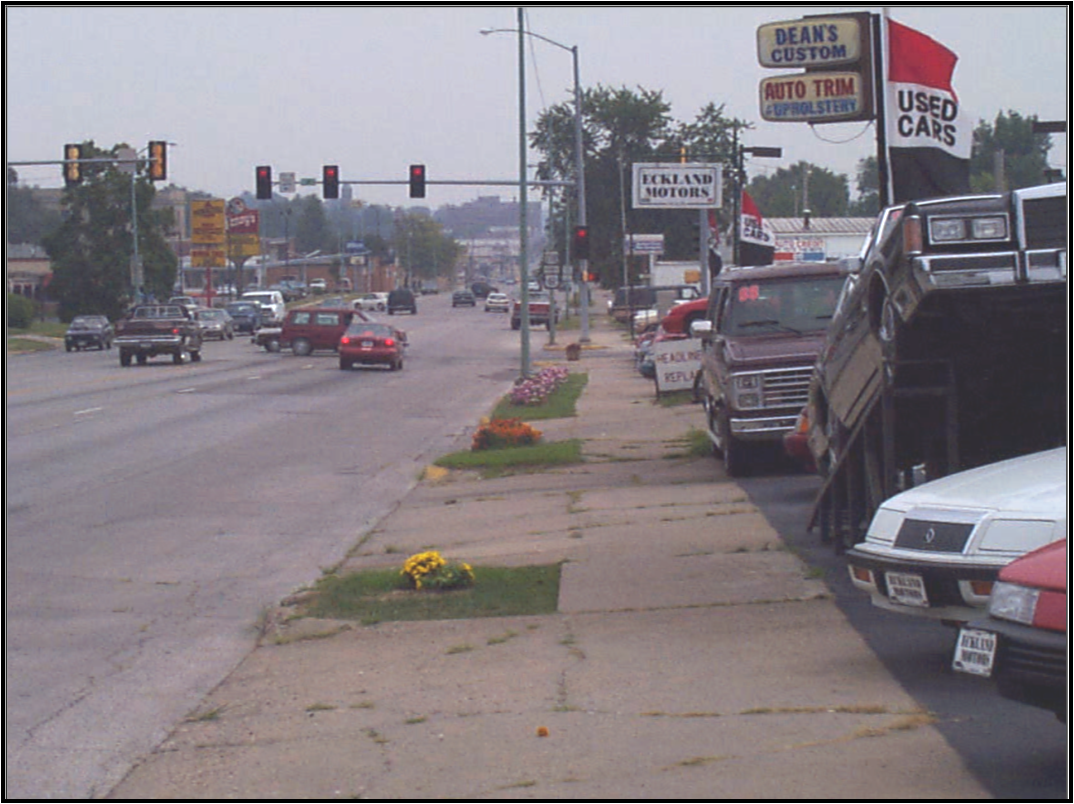
- An increase in vehicular crashes
- More collisions involving pedestrians and cyclists
- Accelerated reduction in highway efficiency
- Unsightly commercial strip development
- Degradation of scenic landscapes
- More cut-through traffic in residential neighborhoods due to overburdened arterials
- Homes and businesses adversely affected by a continuous cycle of widening roads
- Increased commute times, fuel consumption, and vehicle emissions as numerous driveways and traffic signals increase congestion and delays along major highways
Not only is inadequate access management costly for government agencies and the public, but it also adversely affects corridor businesses. Over time, closely spaced and poorly designed driveways make it more difficult for customers to enter and exit businesses safely. Access to corner businesses may be blocked by queuing traffic. Newer businesses seek out locations that are more attractive and have fewer access and congestion problems. Customers begin to patronize businesses with safer, more convenient access and avoid businesses in areas of poor access design. Gradually the older developed areas begin to deteriorate because of access and aesthetic problems, and investment moves to newer, better-managed corridors.
WisDOT's access management goal
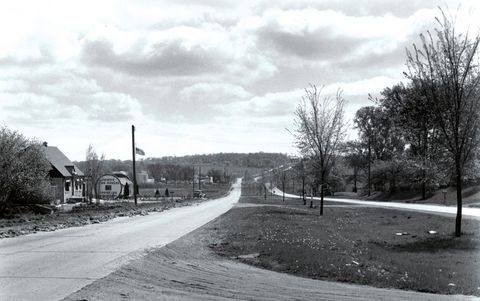
Blue Mound Road
Protect the safety and capacity of, traffic flow on, and public investment in, state highways through a sound set of access management policies, and work with the public and local governments to provide access where it is possible with minimal conflicts.
Access management is the key to a highway's two primary functions: (1) mobility and (2) access to adjacent lands. When implementing access management on state highways, WisDOT recognizes that many factors need to be considered, such as:
- The interests of the highway users, which includes all modes of surface transportation (e.g. vehicles, bicycles, pedestrians, etc.).
- Protection of the public investment in the system.
- Local, regional, and state transportation planning, land use planning, and economic development goals.
- The interests of the owners or occupants of nearby lands.
- Minimizing direct state highway access on major highways
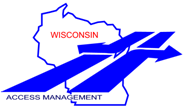 For more information on...
For more information on...
- Obtaining a permit for a driveway or road/street connection to a state highway
- Subdivisions abutting a state highway
- Wisconsin statutes and administrative code on access management
- Basic access management principles
- The 2018 National Access Management Conference
Click on the corresponding link in the top left box.
► Questions regarding access management issues on state highways should be directed to the appropriate
WisDOT region access management contact.
For information regarding the content on WisDOT's access management pages, contact: